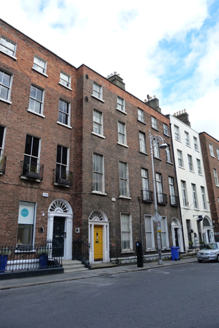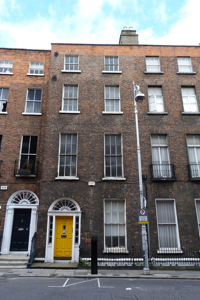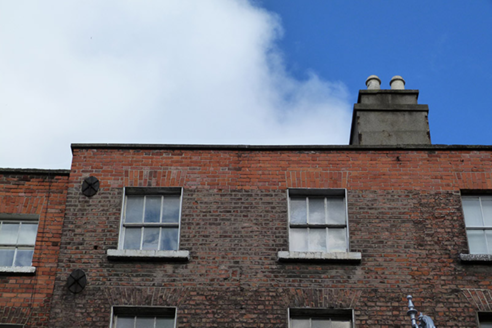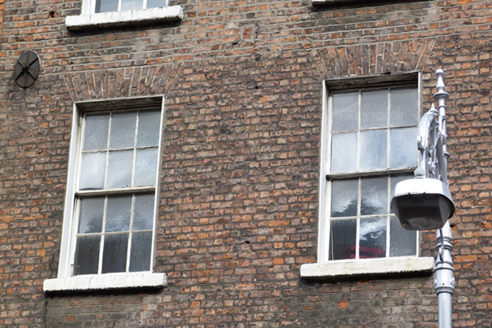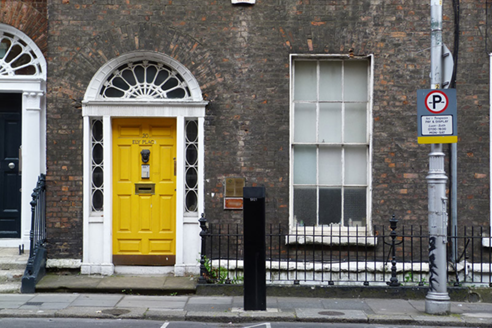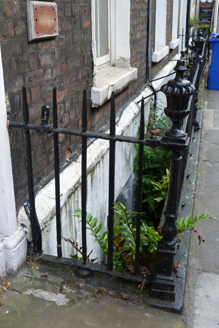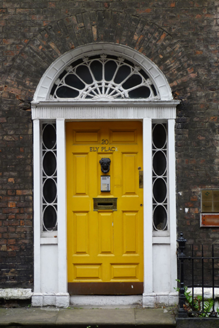Survey Data
Reg No
50100292
Rating
Regional
Categories of Special Interest
Architectural, Artistic
Original Use
House
In Use As
Office
Date
1780 - 1800
Coordinates
316346, 233350
Date Recorded
30/07/2016
Date Updated
--/--/--
Description
Attached two-bay four-storey former house over basement, built c. 1790 as unequal pair with No. 21, with three-bay gabled rear elevation, and front slightly advanced from No. 19. Now in use as offices. Slate roof, hipped to south end of front and to east end of rear, behind rebuilt brick parapet with masonry coping. Shouldered rendered chimneystacks with clay pots to north party wall. Flemish bond red brick walls with iron pattress plates, and painted rendered walls to basement with painted granite plinth course above; rendered to rear. Square-headed window openings, diminishing in height to upper floors, with raised rendered reveals, painted granite sills and timber sliding sash windows with some historic glass, three-over-three pane to top floor and six-over-six pane elsewhere; timber sash to rear. Round-headed door opening with fluted frieze and cornice on plain pilasters, leaded petal fanlight with coved surround, leaded sidelights with oval-and-bar motif, and ten-panel timber door with brass door furniture and figurative knocker. Limestone platform with bull-nosed step to street, and cast-iron railings and decorative corner posts on painted carved granite plinth enclosing shallow basement area. Cast-iron coal-hole covers set in granite flags to footpath. Casey (2005) notes that interior contains some original Dufour wallpaper and neo-Classical plasterwork.
Appraisal
No. 20 forms a pair with No. 21 and is part of a terrace (Nos. 19-22) built by Charles Thorp in the late eighteenth century. Although parapet heights and proportions are largely carried through the group, individuality is present in the design of doorcases, ironwork and interior decorative schemes. Casey (2005) notes that the interior of No. 20 features 'pretty neo-Classical detailing'. The decorative doorcase, complete with petal fanlight, sidelights and twentieth-century brass door furniture provides an architectural focal point in the otherwise restrained façade. No. 20, along with the wider group, contributes strongly to the late eighteenth-century character of Ely Place and enriches the historic architectural fabric of south Dublin. Ely Place was laid out, along with neighbouring Hume Street, on lands leased by Gustavus Hume from the Blue Coat School in 1768. Development began on the east side of the street with the construction of Ely House and the street is now characterized by the late Georgian architecture typical of this part of the city.
